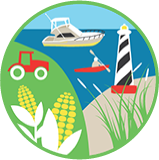Perquimans County, located in the Coastal Plain region of North Carolina, was formed in 1679 and originally called Berkeley Precinct of Albemarle County; it was later renamed for the Perquimans Indians of the area. It is partially bordered by the Albemarle Sound. The Weapemeoc as well as Perquimans Indians were early inhabitants of the county, followed by English and Welsh settlers. Hertford, the county seat, was incorporated in 1758 and named after Hertford, England; the town was originally called Phelps Point after a local landowner named Jonathon Phelps. Other communities in Perquimans County include Winfall, Belvidere, Durants Neck, Chapanoke, and Snug Harbor. Notable physical features, in addition to the Albemarle Sound, include the Perquimans, Little, and Yeopim Rivers, Harvey and Grassy Points, and Godwin and Sutton Creeks.

Among Perquimans County’s landmarks and historic sites are the brick Newbold-White House (ca. 1730), the Alfred Moore House (ca. 1825), the Thomas Nixon Plantation (1848), and Piney Woods Friends Meetinghouse (1854). The county hosts several popular festivals and annual events, including the Perquimans County Indian Summer Festival, the Hearth and Harvest Festival, and the Spring Fling and Old-Timers Game.
Perquimans County, with 100 miles of shoreline, is a haven for boaters, fishers, and hunters. The county has more than 65,000 acres of active farmland producing soybeans, corn, peanuts, cotton, vegetables, poultry, swine, and beef cattle. The county’s primary manufactured product is apparel. The estimated population of Perquimans County in 2004 was slightly less than 12,000.
